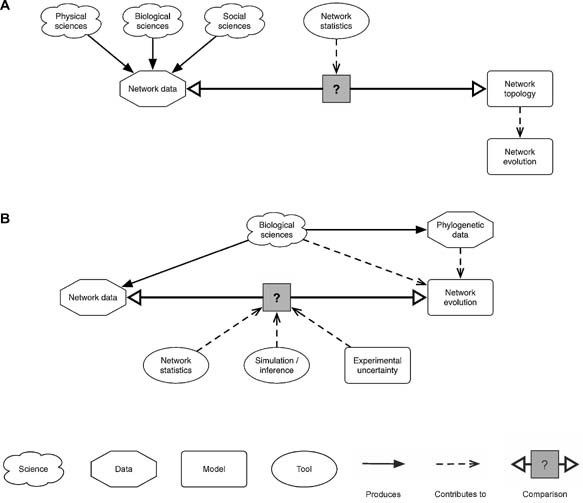Figure 3.

Changing research paradigms in the study of biological network evolution. A: Throughout the development of network theory, biological networks have been of great interest as data-sets to be analysed alongside examples of technological (e.g. internet, world-wide-web, power grid) and social (e.g. friendship, collaboration) networks. Early work tended to focus on the development of simple models of archetypal network topologies. Although many authors were keen to address the evolution of biological networks, the evolutionary models developed were primarily designed to reproduce the simple topologies under consideration, and as such were rarely tested directly against the data. B: A more sophisticated research paradigm for studying the evolution of biological networks starts from the viewpoint that any evolutionary model should relate directly to the biological system under study, with reference to population genetics and genomics where appropriate. Using simulation and probabilistic inference methods, models of network evolution can be tested directly against the biological data, taking factors such as experimental uncertainties and biases into account.
